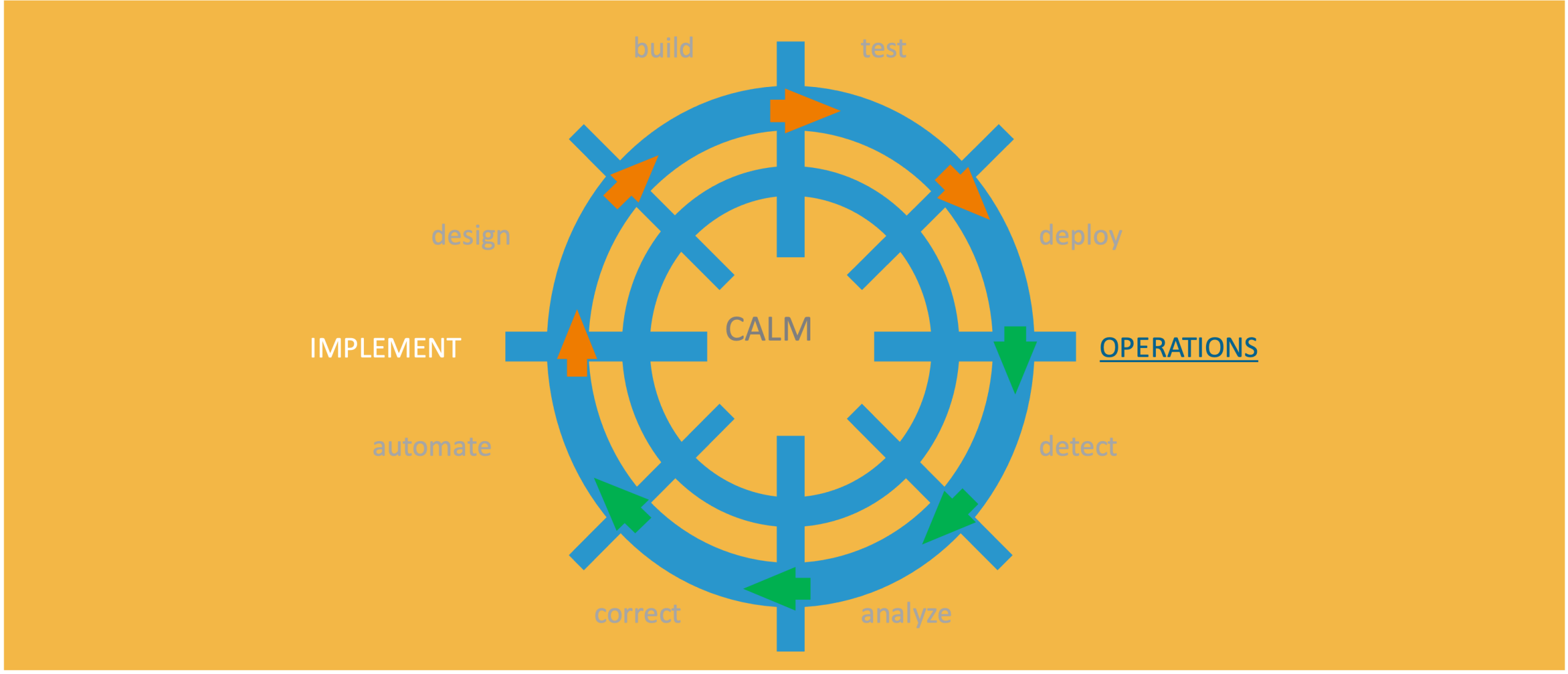
In the Picture: Application Lifecycle Mgt S/4HANA Cloud: Operations
SAP Cloud ALM for Management
The blog on application management within SAP S/4HANA Cloud is divided into two parts:
- Part 1 is about implementation - Link to Calm - Implementations
- Part 2 is about management
In Part 2, I want to share the capabilities of Application Lifecycle Management for Operations, as part of the functionality of SAP S/4HANA Cloud, Public Edition.
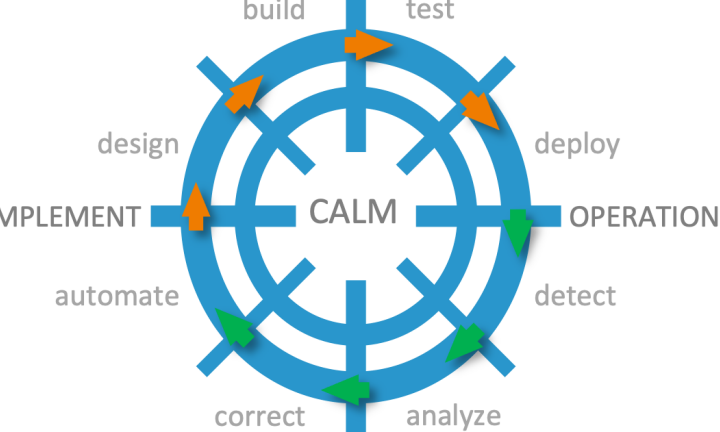
The Importance of Monitoring within SaaS
Although it may seem contradictory, SAP offers not only the Software as a Service (SaaS) solution SAP S/4HANA Cloud, Public Edition (S4HC), but also an associated monitoring tool.
Here's why: SAP takes responsibility for the smooth operation of the application, database and underlying infrastructure (such as networks and data centers) for their SaaS solutions, including SAP S/4HANA Cloud, SAP Ariba, SAP SuccessFactors and SAP Concur.
However, SAP does not monitor the proper handling of transactions within the SAP S/4HANA Cloud, Public Edition. Suppose a problem occurs with a workflow for approving a purchase invoice, it is up to the customer organization to identify and correct it. In such situations, it is crucial to have an alert signal that indicates when something goes wrong. This is where CALM (Cloud Application Lifecycle Management) comes in. CALM provides monitoring and identifies problems within the workflow, which is essential for efficient troubleshooting.
In addition to SAP S/4HANA Cloud, Public Edition, SAP also offers the SAP Business Technology Platform (SAP BTP), which allows customers to develop their own applications as extensions to standard S4HC functionality, or integrations between SAP S/4HANA Cloud, Public Edition and other systems (both SAP and non-SAP). SAP BTP is also offered as SaaS, where SAP is responsible for the undisturbed operation of the technology platform, but not for the performance of the active apps or integrations on it. Again, CALM plays a crucial role in monitoring SAP BTP to ensure that the platform and the processes running on it are functioning properly, which is vital to the continuity and success of business processes.
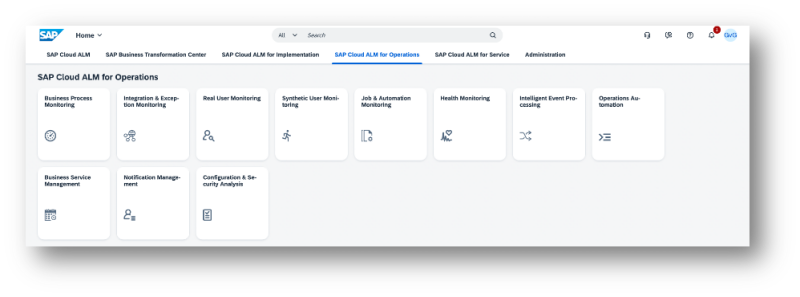
Essential for Business Process Monitoring.
The Business Process Monitoring (BPMon) application within CALM (Cloud Application Lifecycle Management) plays a critical role in supporting the detect-to-correct lifecycle of SAP Cloud solutions. This support extends across the end-to-end processes of the SAP Intelligent Suite, ensuring seamless integration and operation of critical business processes.
For the following end-to-end processes, BPMon provides effective monitoring:
Recruit to Retire: This process covers the entire process from recruitment to retirement of staff.
Lead to Cash: This workflow covers the process from lead generation to revenue realization.
Source to Pay: This involves the complete process from procurement to payment.
Design to Operate: This process covers everything from product design to operational execution.
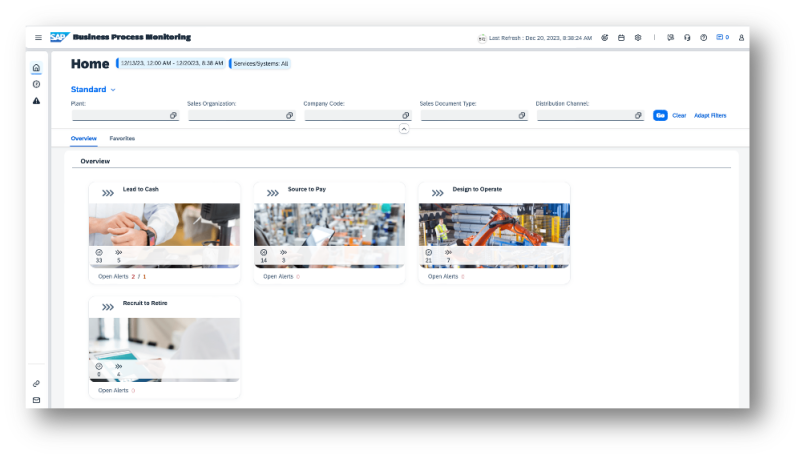
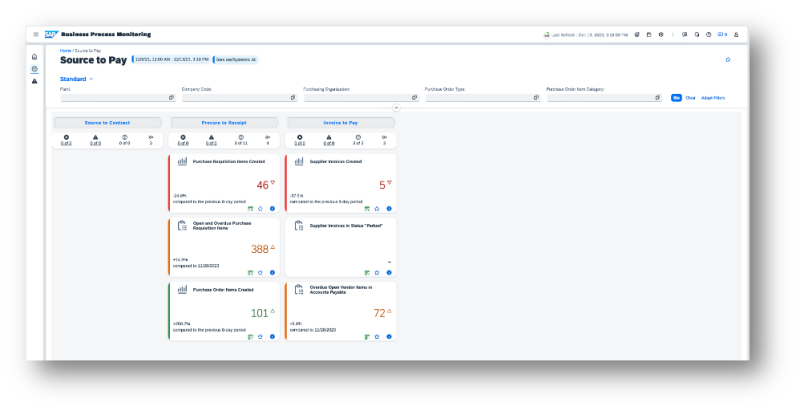
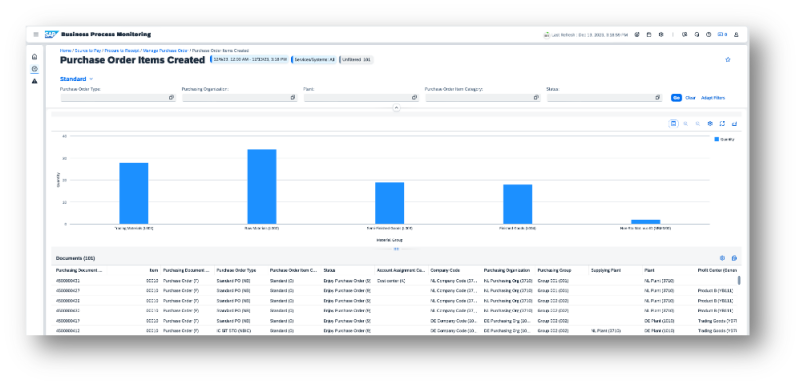
The goal of business process monitoring is to provide clear insights into the performance and health of these processes. This is achieved by using predefined key performance indicators (KPIs). This enables both business users and IT professionals to quickly identify disruptions in business processes and proactively respond to anomalies. This prevents problems from escalating into critical situations. The two main focus areas here are:
- Identifying Process Disruptions and Exceptions: This is done through the continuous monitoring of KPIs, ensuring that deviations in process execution are quickly noticed.
- Identifying Technical Issues: This includes identifying technical issues that can directly affect business-critical processes.
This focused monitoring allows companies to enjoy smooth business operations, free from unnecessary interruptions. This not only contributes to higher quality and efficiency in the execution of business processes, but also increases the overall performance and stability of the organization.
Monitoring Integration and Exception
Integration and Exception Monitoring (Integration & Exception Monitoring) aims to provide complete transparency in data exchange processes. It facilitates the monitoring of all types of interfaces by using a uniform user experience and a standardized handling process.
This form of monitoring bridges the gap between IT and business operations. It establishes correlation between integration artifacts, resulting in an end-to-end view of calls and message flows between all cloud services and systems involved. This allows users to analyze the actual processing of interface calls and message flows, and identify the technical or business root causes.
Integration & Exception Monitoring provides the following functionalities:
Monitoring: This provides a comprehensive status overview for any system or cloud component, related to messages across various interfaces (both inbound and outbound). Components can be organized into scenarios to establish relationships between different message flows. Detailed examination of individual messages allows clients to examine specific problems and details of messages.
Alerting: The collected data can be used to set alerts for specific error conditions, such as messages with an ERROR status in a particular component or scenario. These alerts are collected in an Alert Inbox, where users can analyze the details of the alert and learn more about the associated message details. Users can take various actions within the Alert Inbox such as assigning a processor, adding comments, deferring or acknowledging an alert.
Tracking: Users can track and trace individual messages by specific business context attributes, such as order numbers, employee IDs or other relevant attributes. The prerequisite is that the (business) context information is released by the relevant component and forwarded to SAP Cloud ALM together with the message log fragments. This can be done, for example, through custom header attributes in SAP Cloud Platform Integration or a unique message ID. The search function works across components or categories.
Note: Although some monitoring and functionalities are also available within the Integration Suite, this tool is primarily aimed at technical users. However, capturing business context, which is excellent within CALM, is not possible here.
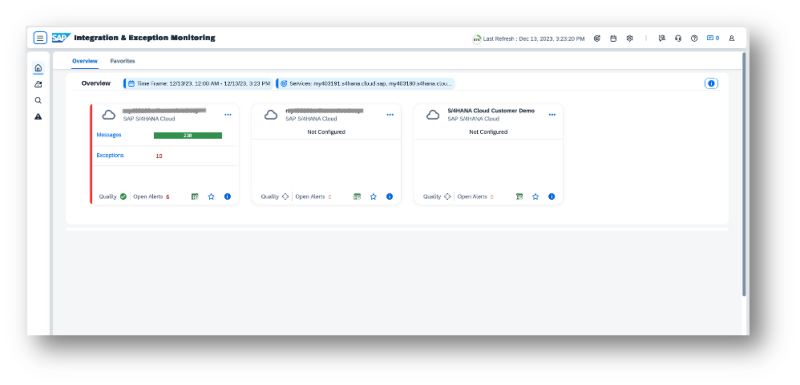

Real User Monitoring
The purpose of Real User Monitoring (RUM) is to provide transparency about the usage and performance of user interactions, allowing insight into any performance bottlenecks.
Real User Monitoring helps IT and business users understand how often applications are running, what the end-user response times are, and how these response times are built up.
The following screens are available:
Overview
An overview of the performance measurement for services in your scope in the selected time range is displayed as the so-called Apdex (Application Performance Index). This is an open standard developed for measuring application performance. The Apdex rating is based on historical values.
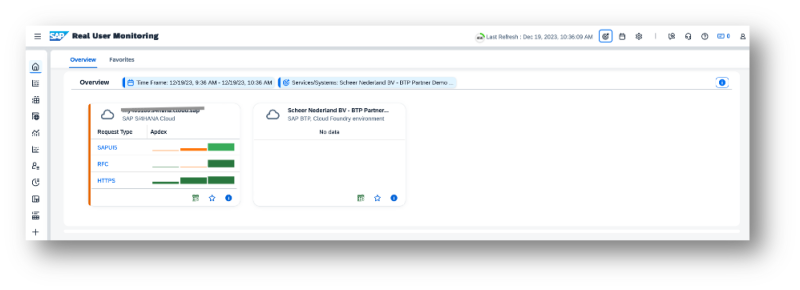
Request overview
This overview provides the following information within the selected time range:
- Application (Fiori-ID) or request name (URL for HTTPS).
- Type (SAPUI5, HTTPS,...)
- Number of red executions
- Total number of executions
- Average response time
- Number of different users

Through drill-down, more detailed information can be retrieved and ultimately the time at which response times have been above acceptable standards can be examined so that action can be taken.


Analysis
The Analysis view provides flexible selection of statistics and dimensions for analysis and download functionality
Available statistics:
- E2E response time
- Backend time
- Network time
- Executions
Dimensions:
- Application/request
- Request type
- User
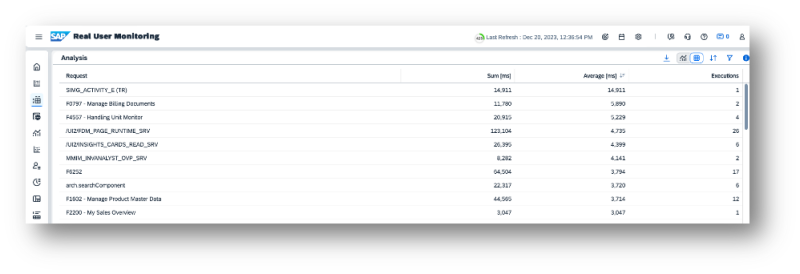
Front end overview
Key usage and performance metrics for the following front end requests are shown here:
- SAPUI5
- Web Dynpro
- Web GUI
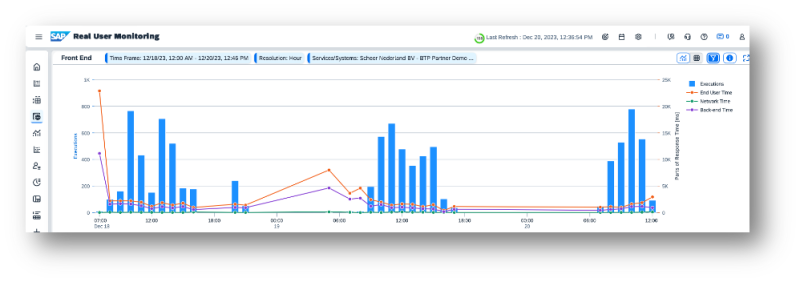
Back End overview
Key usage and performance metrics for the following back end requests are displayed here:
- HTTP(S)
- RFC(S) (only on-premise)
- Dialog (only on-premise)
- Web Service
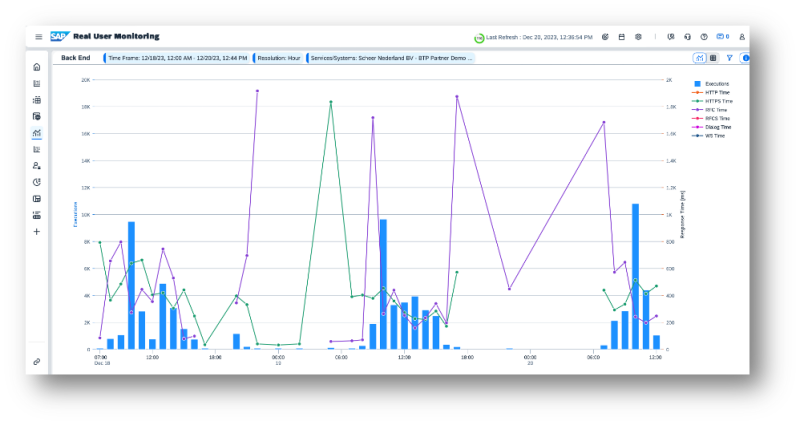
Health Monitoring
In the Health Monitoring app, you can check the health of your monitored cloud service and technical systems. Technical statistics are collected on a regular basis and can be used to calculate the overall health of the monitored object. Monitored metrics are defined by the service itself and may vary by service type.
The following functions are available:
Overview
The Overview screen allows you to see the current status of all cloud services or technical systems connected to Health Monitoring. An overall health is calculated based on the number of metrics in alert or critical status.
Monitoring
Details for each monitored object can be shown when it is selected on the overview page. There you will see a list of components and metrics. Clicking on a tile of a component or metric will give you more details about that metric.
Analytics
For each metric it is possible to show historical values. Here you can identify trends or examine at what point a specific resource shortage occurred.
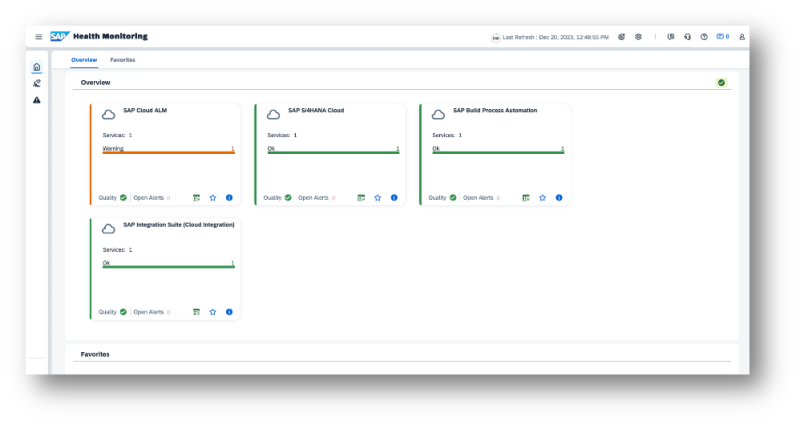

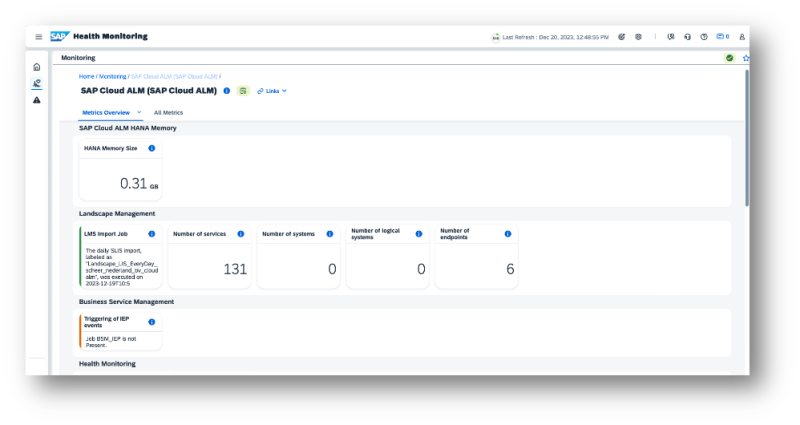
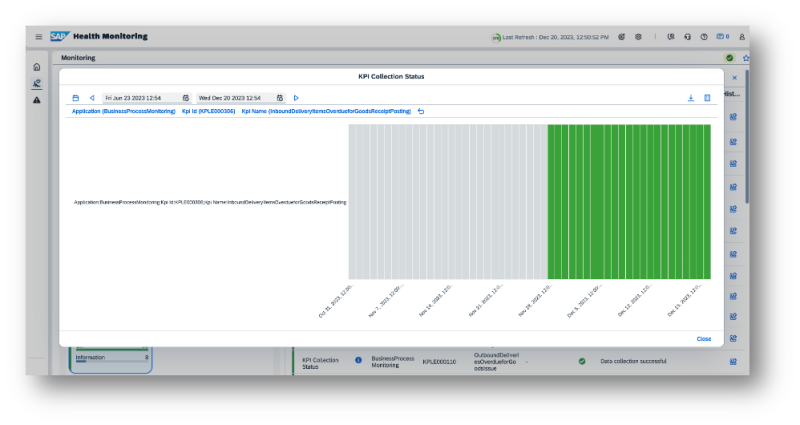
Job & Automation Monitoring
The purpose of Job & Automation Monitoring is to provide centralized monitoring for all SAP products to complement local job scheduling. It provides transparency on the status of different jobs with respect to execution status, application status, start delay and run time.
The added value of this app is that job monitoring can be performed from a unified environment, as well as the handling of its exceptions (e.g., if a job "needs a push"). This is much more user-friendly than keeping an eye on the various monitoring tools in the underlying platforms (S/4HANA Cloud, BTP, SuccessFactors ...).
Scope and services
Job & Automation Monitoring in CALM collects data for these job types:
- SAP Application task
- SAP ABAP job
- SAP BW process chain
- SAP Build Process Automation Job / SAP Intelligent RPA Job
- SAP Business workflow
- SAP Job Scheduling Service Job (from an application built by BTP customer).
The following services are supported:
- SAP S/4HANA Cloud
- SAP S/4HANA and SAP Business Suite
- SAP Build Process Automation (SAP Intelligent RPA)
- SAP Marketing Cloud
- SAP IBP
- SAP SuccessFactors Employee Central Payroll
- SAP BTP, ABAP Environment
- SAP BTP, Cloud Foundry (customer apps)
As with other CALM apps, we see that we can navigate from an overview of services to an individual event, and we can also access historical data:
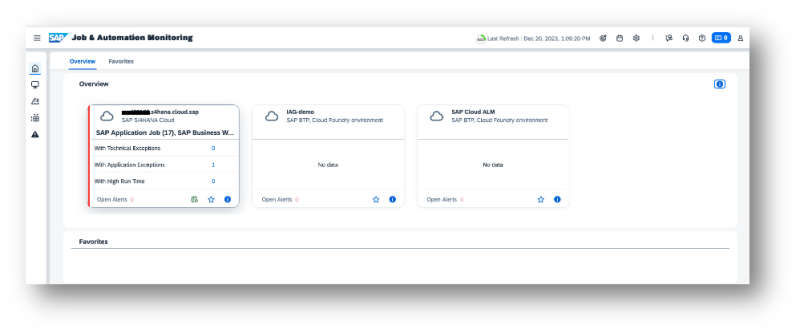


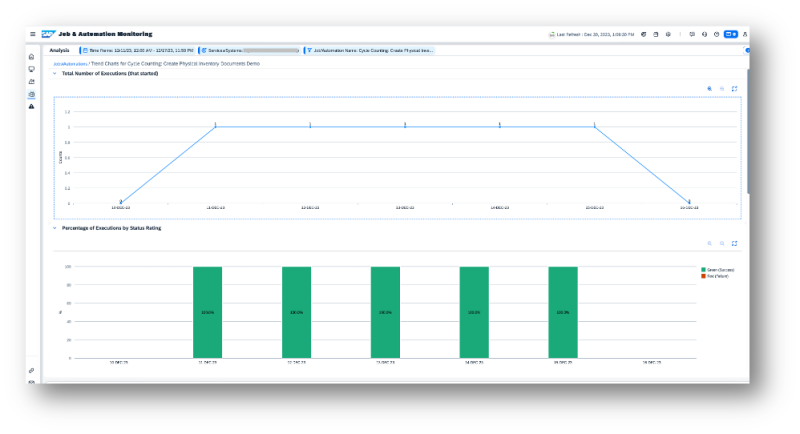
Notification Management
Of course, it is convenient - if a critical problem has been identified - to have the support team actively receive an alert in the mailbox. With notification management, the mail addresses of the support team can be set up.

Finally
As mentioned earlier, CALM is included in the SAP Cloud license. Thus, there is no reason not to use it in the S/4HANA Cloud journey you may soon embark on. Therefore, try to understand the richness of the included content and think about how it will help you in this journey. Also, take a look at the SAP Cloud ALM roadmap in the Roadmap Explorer. The tool is already quite mature, but new features are on the way. And those, as you would expect from a Cloud environment, will be installed for you without you having to worry about it.
